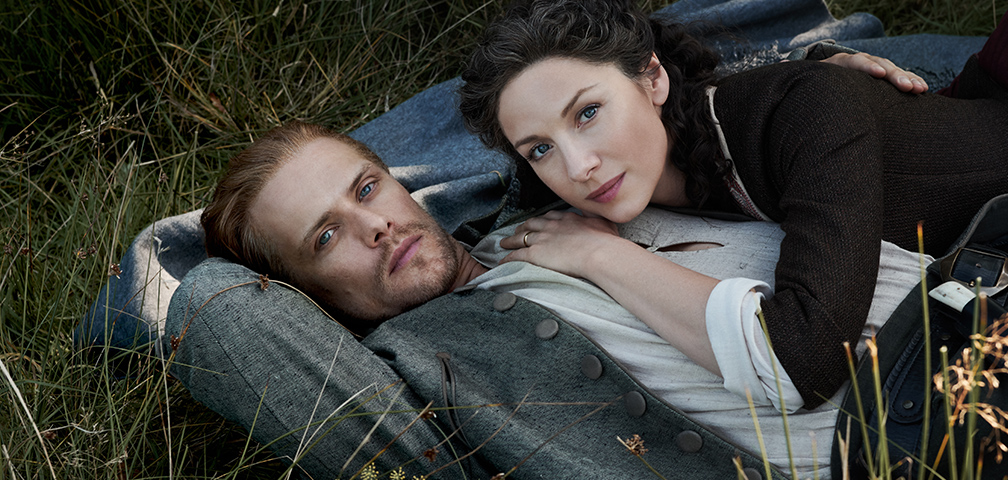
Sam Heughan and Caitriona Balfe in ‘Outlander’ courtesy of Starz.
It’s 90 degrees today in Los Angeles. I don’t have air conditioning, so typically on a hot day I’d go to a nice refrigerated movie theater and watch that one film I somehow missed. But these days aren’t typical, and due to the pandemic known as COVID-19, movie theaters are closed. It’s hard to know when they’ll ever reopen and certainly, some smaller chains have likely closed their doors forever. Thank goodness for streaming platforms like Netflix, Apple TV+, Hulu, Amazon and Disney+. While they can’t lower the temperature in my living room, I can get a glass of ice water and binge a show like Outlander, set in the frigid Scottish highlands.
With the future of the film industry in question, as writers, now is the time to start working on that binge-worthy TV show. The assignment is more than writing a TV pilot; it’s creating an experience that connect viewers to your characters using empathy and conflict as your story twists, turns and unfolds in ways that compel viewers to keep watching. You want them to stay on your emotional rollercoaster as long as possible, so that requires character highs, lows and surprises. Let’s look at some helpful ways to build your TV roller coaster.
Signup for ScreenwritingU’s Binge Worthy TV Bootcamp starting May 30
No. 1. Divide the season into three acts
As you start to plan your story and before you dole it out into episodes, take a cue from three-act film structure and map your story out in three acts. The first three episodes should be like the first act of a film: set up the main characters in their normal world, there’s a call to action, your protagonist refuses the call, etc. So your first act break will be at the end of episode three and the conflict needs to be big. Depending on how many episodes you’re creating, the next three to four will be the second act, with the last three or four as the third act.
In a sense, you’re writing an eight to 13-hour movie. The thrill is that the viewer gets to choose how much to view at once.
No. 2: The Hook(s)
Good binge-worthy shows have hooks at the end of nearly all the episodes, but you at least want to create strong hooks, also called cliffhangers, at the end of episodes 1, 2 and 3. This is the opposite of a procedural drama like CBS’ Tommy or FBI because these shows resolve at the end of each episode.
The end of the episode hook is possibly more powerful than you think. According to Adam Cox, a psychotherapist in Great Britain, “A TV cliffhanger is a reward mechanism – like drink or drugs. It releases dopamine…” Dopamine is the neurotransmitter in our brains that helps provide pleasurable feelings and, while our stories don’t necessarily need to provide feel-good storylines, understand that the pleasure comes from seeing the cliffhanger and then finding out how it is resolved.
No. 2: Characters with questionable morals
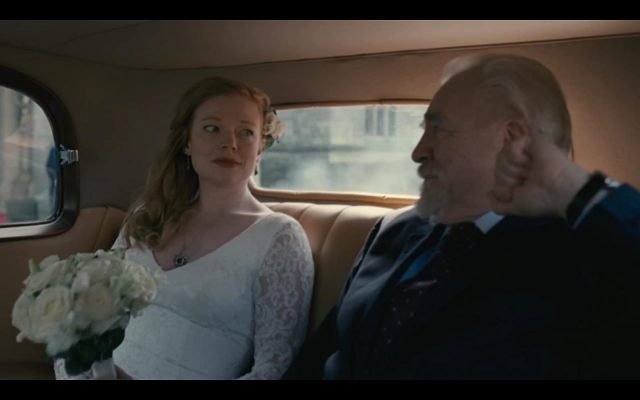
Sarah Snook and Brian Cox in ‘Succession’ courtesy of HBO.
Save your quirky characters for a sitcom and break out your reckless, selfish, ambition-driven characters for your binge-worthy show. Populate your show with people who cross the line morally and regularly enter the dark side. Instead of thinking about your characters as good or bad people, think of them as desperate. Good people will often do very bad things out of desperation.
HBO’s Succession is a good example of a binge-worthy show with characters making choices that are repeatedly greedy, offensive and selfish. As a viewer, the delight comes from watching the characters make terrible decisions then scramble as they deal with the ramifications.
No. 3. Not all main characters need to be in each episode
It used to be that all the main characters in a show needed to be utilized in each episode, every 10 pages or so. That’s no longer the case since people are watching two or three episodes at a time. A character may make an appearance in episode 1 and not return until episode 4. For a binge-watcher, episode 1 may just be a few hours or day ago and that character remains familiar. There is a freedom here to explore characters at your own pace and really build in subtlety and definition.
No. 4. Play around with structure
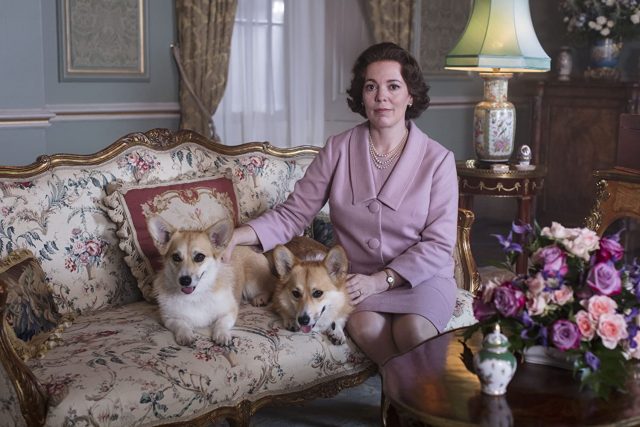
Olivia Colman in ‘The Crown’ courtesy of Netflix.
While most traditional TV shows use an A, B and C story structure, it’s not a must for binge-worthy shows. Black Mirror famously created a “choose your own adventure” episode. While The Crown season 3 picked up with a new lead actress (Olivia Colman as Queen Elizabeth) and covers a whopping 13 years (1964 to 1977) in just one season.
Explore ways to go backwards or forwards in time, or perhaps create episodes told from various characters’ points of view. Be creative not only with your story, but the ways in which you tell it.
No. 4: Give your characters secrets
Secrets fuel your characters and motivate them in ways they otherwise wouldn’t be motivated. Some characters may reveal their secrets early on, some may wait until the middle of the season. This is a chance to build mystery and give layers to your characters.
No. 5. Create a world that we haven’t explored before
There are many reasons Breaking Bad was so popular, but certainly one was that we’d never seen a high school chemistry teacher become a meth dealer. The premise was audacious yet familiar since most of us had a chemistry teacher at one point in time. While Tiger King is a documentary, we’re fascinated by the little-seen world of a man who calls himself Joe Exotic and collects big cats. It’s fine to create a traditional crime drama, but add a twist. Make it feel new and unexplored.
No. 6. Pull from the zeitgeist
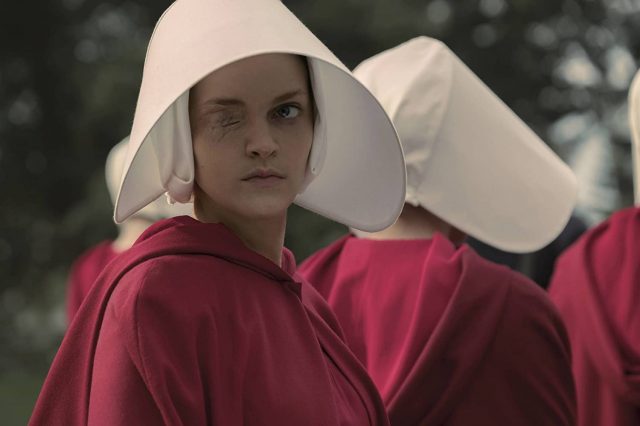
Madeline Brewer in ‘The Handmaid’s Tale’ courtesy of Hulu.
Considering there is a worldwide pandemic right now, it’s possible a lot of writers will want to explore this experience through writing a TV show. Some will be more realistic and others will be explore it in a more symbolic way. But that’s just one of many things going on in our culture.
Though the novel The Handmaid’s Tale was published in 1985, themes of women’s rights continue to be in the news today. Whatever you choose for the world of your show, think about how it is relevant to today’s culture.
Let us know what you’re writing in the comments section below.

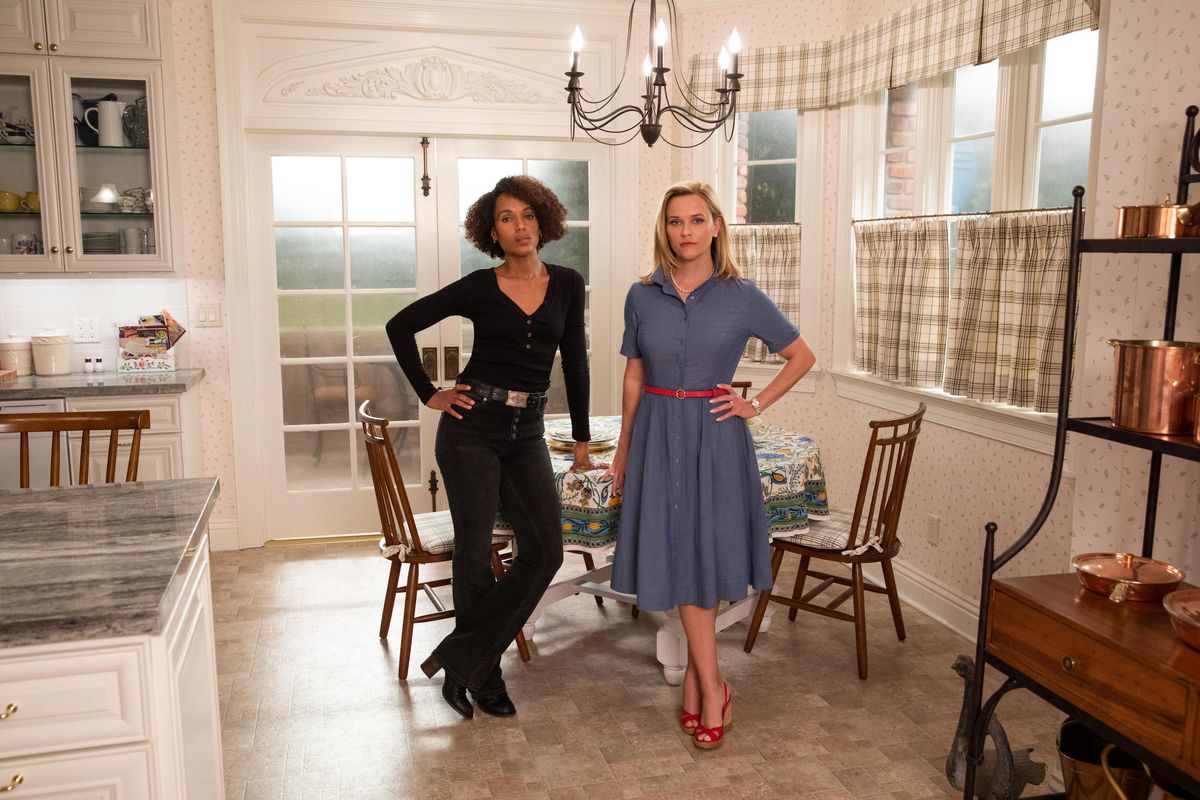


5 Replies to "6 Secrets to Writing Binge-Worthy TV Shows"
Anna Burroughs April 28, 2020 (7:23 am)
“…Though the novel The Handmaid’s Tale was published in 1985, themes of women’s rights and totalitarianism were again brought to light in 2016 after Donald Trump was elected president. The experience of watching The Handmaid’s Tale would be very different if Hillary Clinton had been elected. In fact, Netflix passed on the show, perhaps thinking it wasn’t relevant at the time when it was pitched….”
You had me until you got political. Unlike the author, I’m old enough to have eagerly read “The Handmaid’s Tale” when it was first released in 1987 and watched an interview on TV where the author, Margaret Atwood, stated that the book was a political statement about the fundamentalist Islamicization and backsliding of women’s rights in Muslim countries, the forced wearing of the hijab, and the outlawing of women’s education in Afghanistan. Just because Atwood -now- finds it convenient to cite Trump, in order to get her books made into a television series, doesn’t make it true.
So sick of all this political bull$#!t. People are sick of Hollywood, and I’m not even conservative! #WalkAway
Dalton Trumbo April 28, 2020 (11:37 am)
People are sick of Hollywood? I think the streaming services are doing pretty good right about now. What I really think people are sick of are people like you, when someone writes a an article entirely on screenwriting, with perhaps a couple sentences you disagree with and you go nuts and blow everything out of proportion. If that’s how you want to be, I recommend sticking with the subreddit r/The_Donald.
robbert April 28, 2020 (8:14 pm)
Forget the erratic mood that surrounds us the creative mind must stay unaffected by petty rule. If you have a story write it down.
Shanee April 29, 2020 (12:04 pm)
Excellent advice, Robert.
Chris May 5, 2020 (3:18 pm)
Thought the author was merely saying “pull from the zeitgeist” as a way to make our writing more bingeworthy. Didn’t think she was making any comment about whether or not Clinton or Trump is better, just that the issues can be related to our time. But was very interested to hear that the book was originally a political statement about fundamentalist Islam. Can totally see that! And whatever Atwood says now, it was political then, and can still be seen as political now. Alas, I do not think we can escape politics, whatever side we may be on. Also, by the time I read the article, it looked like the author had removed the part (or some of the part) that you had objected to. So, not sure if I am getting the author’s intent right, or yours. Sorry if I have misunderstood anybody, and curious to hear what you really think, and not just what I think you think.